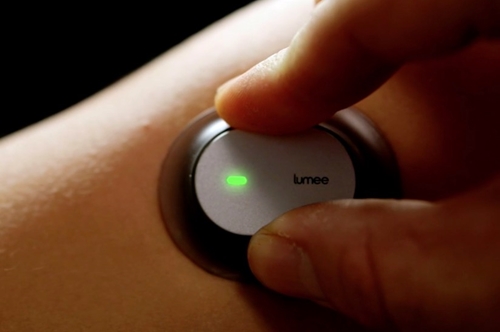11 April 2016. Profusa Inc., a company designing sensors that measure tissue oxygen levels in individuals with peripheral artery disease, received an NIH grant to advance its technology. The $225,000 Small Business Innovation Research grant for 2016 is divided between two agencies of National Institutes of Health: National Center for Advancing Translational Sciences and National Heart, Lung, and Blood Institute. Funding for the entire project is expected to reach $1.75 million.
Profusa, in South San Francisco, develops tiny biocompatible sensors designed to be worn inside the body and not induce immune reactions. The company’s lead product is the Lumee oxygen sensing system that continuously monitors oxygen levels in tissue in the limbs of people with peripheral artery disease. This disorder results from plaque building up and narrowing arteries, reducing the flow of blood and the oxygen it carries to tissues, particularly in the legs. Smoking and age are key risk factors for peripheral artery disease causing pain and numbness in affected areas, and gangrene from infection in advanced cases, leading to amputation.
The company’s sensors, injected into patients, are no more than 5 millimeters in length, about 0.2 inches, and 500 microns, or 0.02 inches, in diameter, made from a porous gel that simulates the microenvironment of cells. The gel contains fluorescent molecules that react to the presence of target biomarkers. An optical reader measures the level of fluorescent signal from the sensor indicating the level of target molecule, in this case oxygen in tissue.
A proof-of-concept study published in 2015 shows a Profusa biosensor system monitored 10 individuals with peripheral artery disease for 28 days, with no adverse effects reported from the injected sensors. The grant from NIH first supports safety studies to verify biocompatibility of the sensors and minimize their size. Natalie Wisniewski, founder and chief technologist at Profusa, leads the project’s first phase.
The second phase of the project is a clinical trial with 50 individuals having peripheral artery disease, or PAD, which is led by Christopher Owens, a vascular surgeon and professor at University of California in San Francisco. “Our goal,” says Wisniewski in a company statement, “is to further demonstrate the functionality of Profusa’s novel Lumee oxygen biosensor technology in patients with PAD, and to determine its ability to predict surgical outcomes and to guide additional therapies to avoid amputation.”
The Small Business Innovation Research grant is a fast-track award that combines the two usually separate phases in SBIR funding. Profusa says this is the second fast-track award it received from NIH. The company filed for marketing approval in Europe, which it expects later this year.
Read more:
- Smartphone-Based Sensor Gives Early Epilepsy Warning
- Electronic Patch Offers Pain Relief, Cuts Medication Use
- Wide Variation Found in Consumer Blood Tests
- EKG Technology Integrated into Apple Watch Band
- Hydrogel Injection Tested to Treat Advanced Artery Disease
* * *


 RSS - Posts
RSS - Posts
[…] NIH Funds Biosensors to Monitor Oxygen in Tissue […]
[…] NIH Funds Biosensors to Monitor Oxygen in Tissue […]